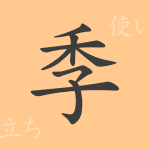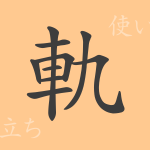The beauty of the Japanese language is reflected in its characters. Each kanji (漢字) has a history, and deep meanings are embedded in their backgrounds. In this article, we spotlight the kanji “紀” (き, ki), a commonly used character in Japan, and delve into its origins, meanings, usage, as well as idioms and phrases where it appears frequently in our daily lives.
Origins of 紀 (き, ki)
The kanji “紀” (き, ki) has been used in China for thousands of years, dating back to approximately 3000 years ago. Originally, it evolved from the character “己” (き, ki), which meant to bind threads, represented by “糸己” (しとき, shitoki) that simplified into “紀” (き, ki). This transformation reflects the changes in the meanings of characters, mirroring the transitions in people’s lives and culture.
Meanings and Usage of 紀 (き, ki)
The kanji “紀” (き, ki) has multiple meanings. One is as a noun indicating an “era” or “period,” used in terms like “一紀” (いっき, ikki) or “世紀” (せいき, seiki). It also signifies the recording of personal actions or events, as seen in words like “日記” (にっき, nikki) or “紀行文” (きこうぶん, kikoubun). Additionally, it encompasses the nuances of order and norms, hinting at its role in bringing structure to people’s lives.
Readings, Stroke Count, and Radical of 紀 (き, ki)
From the shape and composition of the kanji “紀” (き, ki), we can derive various pieces of information:
- Readings: Onyomi (Sino-Japanese reading) is “キ” (ki), no Kunyomi (native Japanese reading)
- Stroke Count: A total of 9 strokes
- Radical: 糸部 (いとへん, itohen) meaning “thread radical”
Idioms, Phrases, and Proverbs Using 紀 (き, ki) and Their Meanings
There are numerous idioms, phrases, and proverbs in the Japanese language that include the character “紀” (き, ki). For instance, “紀元前” (きげんぜん, kigenzen) refers to the years before the Common Era, and “紀伊国屋” (きいこくのや, Kii Kokunoya) is the name of a famous bookstore. “紀要” (きよう, kiyō) signifies scholarly reports or records, while “紀行文” (きこうぶん, kikoubun) denotes a travelogue. These terms each reflect the meanings of “紀” (き, ki), such as “record,” “era,” and “order.”
Summary of 紀 (き, ki)
The kanji “紀” (き, ki), from its formation to the present day, is a character with diverse meanings and applications. In the Japanese language, it has played an important role in recording history and culture. Moreover, idioms and phrases containing “紀” (き, ki) are deeply rooted in the lives and thoughts of the Japanese people. Understanding the meanings behind each character allows us to appreciate the richness of the Japanese language more profoundly.

























